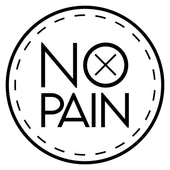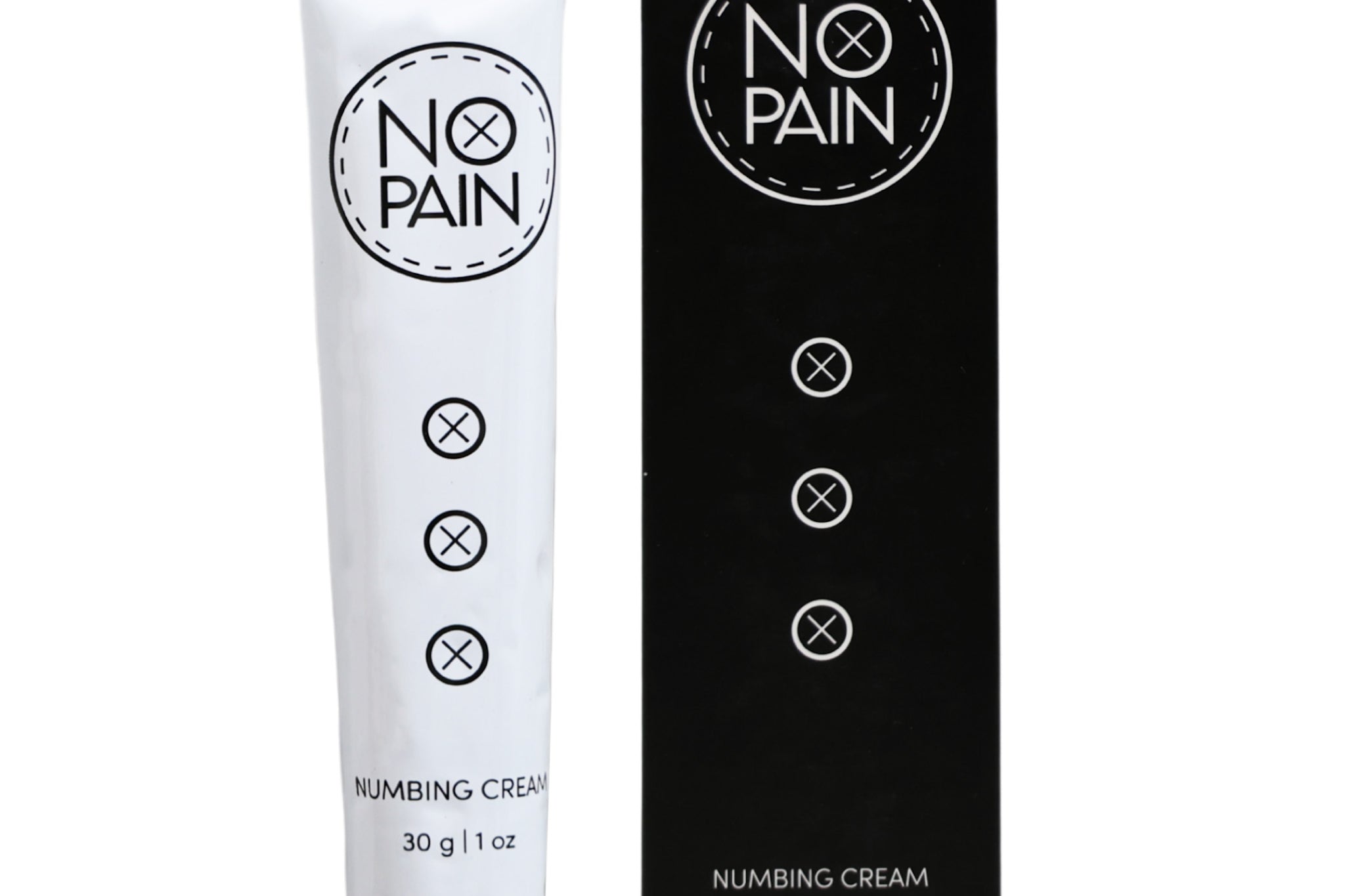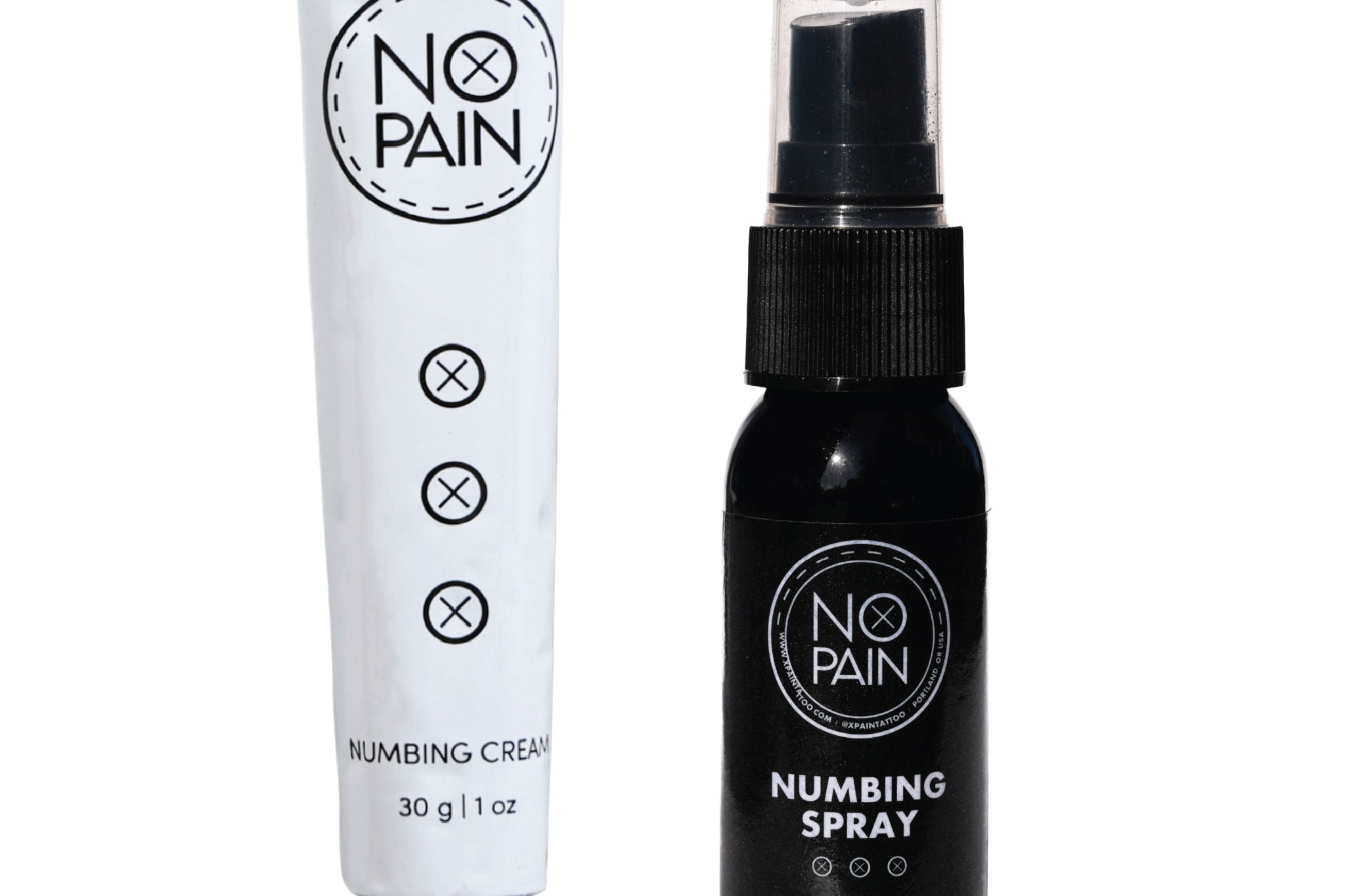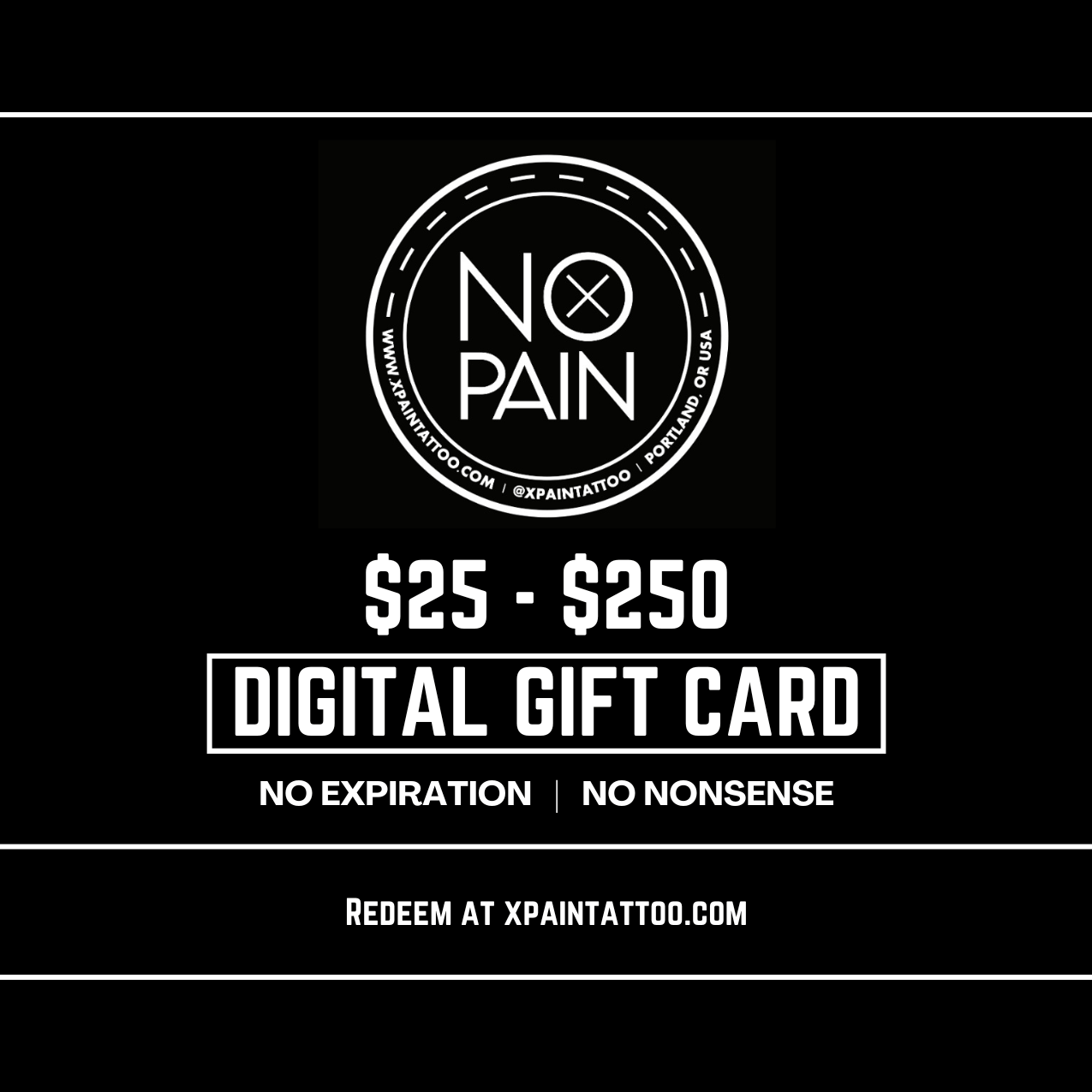With summer in full swing, it's the season of sandals, bare feet, and showing off your ink. A beautifully placed foot tattoo can be an incredibly elegant and striking piece of art. Whether it's a delicate floral design on the top of the foot or a bold statement piece, this placement has a unique appeal.
But anyone who has one will tell you the same thing: that beautiful art comes at a cost. So, let's get right to the question on your mind: just how bad is the pain of a foot tattoo?
There's no way to sugarcoat this: the foot is one of the most painful places on the entire body to get tattooed. The combination of anatomy and nerve endings creates a uniquely intense experience. But the pain is temporary, and with the right preparation, it is absolutely manageable.
From the very first line, you'll instantly understand why this area has such a notorious reputation. It's not just pain—it's the way your foot seems wired to react to every poke and prod, almost like a reflex. Even if you come prepared with numbing sprays or a steely resolve, the sensitivity of the foot makes it tough to resist the urge to flinch. Ironically, the more you tense up and try to fight it, the more you’ll actually feel every pass of the needle.
The first hour can feel both painful and annoying, as you struggle to keep your foot still while your artist works their magic. If your design is on the larger side, brace yourself: the final half hour, especially when the outlines are being filled in, can be nearly unbearable. But there’s a silver lining—watching your chosen artwork take shape can give you a sense of purpose and determination, making those last, stinging minutes a bit more tolerable.
With the right artist and a bit of mental preparation, even this famously sensitive spot becomes manageable—and the results can be well worth the temporary discomfort.
This is your complete guide to foot tattoo pain—why it hurts, where it hurts most, and how to prepare for a successful session.
The Anatomy of Foot Pain: Why This Spot Is So Sensitive
The foot isn't just a flat canvas; it's a complex structure of 26 small bones, dozens of ligaments and tendons, and a massive network of nerve endings, all packed into a small space with very little padding.
-
Paper-Thin Skin: The skin on the top of your foot is incredibly thin and stretched tautly over the bone structure, offering virtually no cushion from the needle.
-
Direct Bone Contact: An artist tattooing your foot is, for the most part, working directly on top of bone. This creates a sharp, rattling vibration that travels through your entire foot. Many people find this deep, vibrating sensation to be even more uncomfortable than the pain of the needle itself.
-
A Web of Nerves: Your feet are extremely sensitive for a reason; they are packed with nerve endings that help you balance and navigate the world. This makes the area highly reactive to the trauma of a tattoo needle.
When the needle first touches down, you'll immediately realize what sets foot tattoos apart. It’s not just pain—there’s a reflexive urge to flinch, almost like a knee-jerk reaction, every time the artist works on your foot. The more you try to resist, the more tension builds up, and tension just amplifies the pain. Even tried-and-true pain relief tricks (like bringing numbing sprays) often do little to take the edge off.
The Foot Pain Map: A Spot-by-Spot Breakdown
On a pain scale of 1 to 10, the foot is almost entirely a high-pain zone.
-
Top of the Foot (Directly on the Bones):
-
Pain Level: 9-10/10. This is the epicenter of the pain and the most common placement for a foot tattoo. The constant rattling on the many small bones is notoriously excruciating. The pain is sharp, deep, and relentless.
-
-
The Toes and Sides of the Foot:
-
Pain Level: 8-10/10. Similar to knuckles, tattooing the toes and the thin-skinned sides of the feet is extremely painful due to the direct bone contact and high concentration of nerves.
-
-
The Heel and Achilles Area:
-
Pain Level: 7-8/10. The skin is a bit tougher and thicker here, but the Achilles tendon is a very sensitive area for many people.
-
-
The Sole of the Foot:
-
Pain Level: 10/10+. Tattooing the sole of the foot is exceptionally rare, extremely painful, and almost never heals well due to the thick, calloused skin. Most reputable artists will advise against it.
-
What Foot Tattoo Pain Feels Like: The Real Experience
The first hour is often the hardest. The pain is both sharp and nagging, and you might catch yourself fighting the urge to pull your foot away with every pass of the needle. Even the most experienced artists expect clients to twitch or flinch—it's almost unavoidable. Don’t be surprised if you find yourself gripping the chair a little tighter or breathing through the discomfort.
If your design is on the larger side, the last stretch can be especially tough. By the time the outline is complete and the artist starts filling in, your foot might feel raw and hypersensitive. Many people report that the final half-hour is nearly unbearable—a test of willpower. But as you watch your new ink take shape, there’s a sense of purpose to the pain. Knowing you’re only minutes away from a beautiful result can help you push through the final moments.
Getting through a foot tattoo is as much about mental focus as it is about physical tolerance. The pain is real, but so is the reward.
The Aftermath: The Challenge of Healing a Foot Tattoo
The challenges don't stop when the machine does. Healing a foot tattoo is difficult. The area will swell significantly, and the constant friction from wearing socks and shoes can irritate the tattoo, leading to a difficult heal and potential ink loss. This makes a smooth, clean session absolutely critical.
But even after you make it through the session, the healing process brings its own set of obstacles. Swelling is nearly inevitable—those first few days can feel like your foot's been replaced with an overfilled water balloon. Putting weight on it can be almost comically uncomfortable (emphasis on almost). Keeping your foot elevated and applying ice packs as often as possible will minimize fluid buildup and help with pain, so don’t skip this step.
Being sidelined—unable to get outside or even wander around your own house—can be frustrating, but it’s essential for a healthy recovery. Consider it temporary: sacrificing a few days of activity for a lifetime of beautiful ink is a fair trade. Remind yourself of that when you’re itching to get up and move.
The Smartest Way to Handle Foot Tattoo Pain
Given the extreme pain level and the absolute need for the client to stay perfectly still, a foot tattoo is a prime candidate for a serious pain management strategy.
This is a situation where a high-quality topical anesthetic isn't a luxury; it's a vital tool for a successful tattoo. Our No Pain Tattoo Numbing Cream can turn an unbearable session into a completely manageable one.
By applying a thick layer to your clean, dry foot and wrapping it as directed 90 minutes before your appointment, you can dramatically dull that sharp, bone-rattling pain. This allows you to relax and, most importantly, hold perfectly still, which is critical for your artist's ability to pull the clean, steady lines required for a beautiful foot tattoo.
Ultimately, embracing the healing process as part of the tattoo journey can help you get through those tough moments. Consider it a rite of passage—one that pays off every time you look at the art on your foot.
The Verdict: How bad is the pain of a foot tattoo? It’s intense. It consistently ranks among the most painful tattoo experiences for clear anatomical reasons.
However, the pain is temporary. Don't let the fear stop you from getting that elegant foot tattoo you've always wanted. With the right preparation, the right artist, and the game-changing power of a good numbing cream, you can walk into your appointment with confidence and walk out with a stunning piece of art.
The Long Story: More on Foot Tattoos From Our Founder, Michael Hollman
I always do my left side with no numbing cream and the right side with numbing cream. There were only two spots that I've had to tap out on, left armpit and left foot. The foot is a different type of pain and it HURTS. If you're not going to go the numbing cream route, I read up on How to Manage Tattoo Pain Without Numbing Cream. The rest of this article is from my personal experience and other blogs and content I've written on this subject.
How Soon Can You Put Weight on a Fresh Foot Tattoo?
If you're wondering how long it will take before you can stand or walk comfortably on your freshly inked foot, the honest answer is: it'll take a few days of patience. Most people find that putting significant weight on their tattooed foot is uncomfortable or even painful for the first three to four days. The swelling that shows up after your session makes walking around feel like stepping on a water balloon that’s about to burst—hardly a recipe for comfort.
To make these first few days less miserable, keep your foot elevated as much as possible and apply cold packs periodically to reduce swelling. This not only helps with the pain, but also minimizes fluid buildup and speeds up the healing process. Once the initial swelling subsides—usually by day four—you'll find it much more comfortable (and far less nerve-wracking) to put weight on your foot again. However, listen to your body and take things slow; every person and every tattoo is a little different.
What It’s Really Like to Get a Foot Tattoo: Firsthand Experience
Let’s talk about what it’s actually like to get a foot tattoo—not just in theory, but from someone who’s gone through the buzzing, bone-rattling reality. If you’re entertaining the idea, here’s the real deal, start to finish.
Before the Needle: Nerves and Prep
No matter how many tattoos you’ve collected elsewhere, prepping for a foot tattoo feels different. Even seasoned tattoo fans get a surge of nerves walking into the studio for this one. It isn’t about being “tough” or “wimpy”—it’s science. Your body knows something challenging is coming, so you’ll probably feel jittery, excited, and maybe even a little giddy as you sit in the chair. Embrace it.
Smart prep goes a long way. Bring a few comforts: headphones to drown out the buzzing, your favorite playlist as a distraction, a snack and water for aftercare, and maybe even a stress ball if you’re extra fidgety. Gum or a sweet drink can help you power through the more intense parts.
During the Tattoo: The Foot Fidgets
When the artist starts, you’ll instantly understand why foot tattoos get their brutal reputation. The pain is more than just sharp—it vibrates through every bone, and your body’s reflexes kick in hard. Even if you pride yourself on sitting like a statue, your foot will want to twitch, flinch, or outright jerk away. No shame in that; even the calmest clients struggle. The best artists are used to it and will coach you through those twitchy moments, working around your natural reactions to keep the design crisp.
If your tattoo is on the larger side or especially intricate, the final stretches can feel relentless. Each new line or bit of shading will test your patience, and time will seem to slow down. At some point, you’ll probably find yourself white-knuckling through it, counting breath cycles, and telling yourself it’ll be worth it. The good news? As the design comes together, seeing the progress helps you push through the worst of it.
Afterward: Swelling, Elevation, and a Dose of Patience
The first days with a fresh foot tattoo are a special kind of awkward. Swelling is almost guaranteed, and it’s not uncommon to feel like your foot might never fit into a shoe again. Elevation and ice packs become your best friends, especially for minimizing that tight, balloon-like ache. And while it can be frustrating to be stuck resting your foot for a few days, it’s essential for proper healing. The more you keep your foot up and baby the fresh ink, the better your results.
Think of these days as the price of admission for a lifetime of bold, beautiful art on one of the body’s most unique canvases. Each wince and wobble will be a distant memory once the swelling subsides, and you’re showing off your new tattoo in those summer sandals.
Embracing the Experience
Ask anyone who’s added some art to their foot, and they’ll probably give you the same answer: the pain is real, but the payoff is huge. The ability to conceal or flaunt your tattoo as you please just sweetens the deal. And, once you’ve survived this particular rite of passage, don’t be shocked if you catch yourself eyeing your other foot—or planning the next addition.
Pain is fleeting; the ink sticks with you. And when you finally step out with your healed foot tattoo, you may just find the whole experience makes the artwork mean even more.
Embracing the Pain: Why It Matters
As daunting as it sounds, there’s something almost poetic about enduring the sharp sting of a foot tattoo. That temporary discomfort—while intense—becomes part of the story behind your ink. Many find that enduring the pain actually deepens their appreciation for both the tattoo and the art form itself. The sensation stays with you, reminding you of your strength and of the intention that fueled your decision.
Getting through one of the most painful tattoo placements can make your new piece feel all the more meaningful. You’ve literally earned it, and every glance at your tattoo can spark a quiet sense of pride. That fleeting pain fades, but the art—and your connection to it—never will.
How Tattoo Artists Manage Flinching and Instinctive Reactions
From the moment the first line is drawn, it becomes clear that foot tattoos aren’t just about enduring pain—they’re about wrangling your body’s natural instinct to flinch. The nerves in your foot love to betray you by sending “jump!” signals at the slightest poke, so even the steadiest person might catch themselves involuntarily twitching during the session.
Great artists are prepared for this. Seasoned professionals have seen it all: the reflexive jumps, the leg wiggles, the clenched fists. Here’s how they take control of the situation:
- Anticipation: An experienced artist expects flinching and adjusts their technique accordingly, working in shorter bursts and timing their needlework between involuntary movements.
- Communication: They’ll talk you through the process, reminding you to breathe and stay as relaxed as possible.
- Strategic Pauses: They know when to pause and let you regroup—whether it’s for a deep breath or a moment to unclench your toes.
- Adapted Positioning: Artists might reposition your foot or change their hand placement to give themselves better control and stability, even if you do jerk a little.
- Pain Management Tips: Many will recommend or apply numbing creams, like No Pain Tattoo Numbing Cream, beforehand for sessions in particularly sensitive spots.
It’s all part of ensuring both the client and the artwork come through unscathed. Flinching doesn’t catch a pro off guard—if anything, it’s just another day at the shop.
Why You Feel Jitters Before a Foot Tattoo (And Why That’s Totally Normal)
If you’re feeling a mix of nerves and excitement as your foot hits the threshold of the tattoo studio, you’re not alone. That flutter in your stomach—the classic pre-tattoo jitters—is your body’s natural response to anticipating pain and the unknown. Fear, in this context, isn’t a sign of weakness; it’s your brain’s perfectly logical way of making you pause and double-check that you know what you’re in for.
Think of it as a built-in safety mechanism: your mind likes to ask, “Are you sure about this?” right before you commit to something bold—whether it’s a foot tattoo or skydiving out of a perfectly good airplane. The adrenaline rush that follows can feel a lot like standing at the edge of a diving board: equal parts nerves and thrill.
For many, the anticipation even adds to the experience. That energy you feel doesn’t always translate into dread—in fact, it can make the whole session feel more momentous. Many seasoned ink enthusiasts liken it to the buzz you get before a big performance or a daunting workout at with a sadistic workout coach. Afterward, you’ll probably feel a heady sense of accomplishment for embracing something challenging and coming out the other side with some incredible art.
Pain, Pride, and the Allure of Foot Tattoos: Why You Might Go Back for More
You’d think that enduring a foot tattoo once would be enough for anyone—but for many, it actually stirs up a desire for more. There’s something about the combination of enduring intense pain and ending up with such a striking, easy-to-show (or hide) piece of art that’s oddly addictive. Maybe it’s the sense of accomplishment you feel every time you glance down and remember what you powered through. Or maybe it’s the artistry itself—your foot becomes a secret gallery you can reveal or keep to yourself, depending on your mood or your shoe choice.
Many find that after weathering their first foot tattoo, they’re already envisioning new designs or planning to complement their current ink. The temporary agony somehow makes the result even more meaningful—a genuine badge of honor. Ask anyone in the community: there's a reason people line up for that second foot tattoo, even knowing exactly what they're in for.





